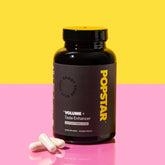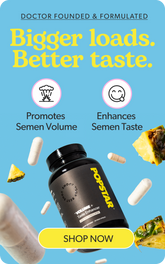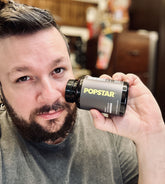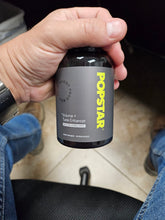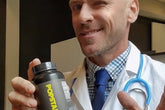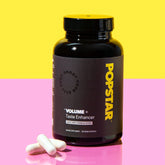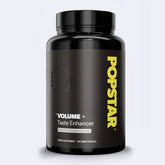Lesbian sex refers to intimate and sexual activity between two women, encompassing a broad range of physical, emotional, and relational dynamics. While it may seem straightforward, this topic spans critical areas of health, understanding, and awareness. In this article, we will introduce key medical considerations, explore common myths, and delve into safe sex practices that are especially relevant for women who have sex with women. Whether you’re looking to understand the health implications, improve intimacy, or simply expand your knowledge, this comprehensive guide is designed for clarity, depth, and balance.
Table of Contents
- Lesbian Sex in Context
- Understanding Key Terminology
- Common Myths and Misconceptions
- Safe Sex Practices for Women Who Have Sex with Women
- Health Considerations
- Questions and Answers
- References
Lesbian Sex in Context
Lesbian sex, broadly defined, involves sexual and emotional intimacy between individuals who identify as women and are sexually or romantically attracted to other women. The term itself is nuanced, reflecting not just physical acts but also cultural, emotional, and psychological elements of attraction and connection. For a men’s health website, understanding lesbian sex offers a more inclusive perspective on human sexuality and highlights the universal importance of safe, consensual, and healthy intimate relationships.
In many cultures, lesbian relationships have historically been overshadowed by stigma, misinformation, or lack of mainstream representation. Today, medical professionals stress the need for comprehensive sexual education that includes people of all orientations. Research demonstrates that while lesbian sex might not involve certain risk factors present in heterosexual intercourse, women who have sex with women (WSW) can still contract sexually transmitted infections (STIs) and other conditions if precautions are not taken. Awareness, open communication, and regular medical check-ups are all part of best practices for safeguarding sexual health and well-being.
Beyond the physical dimension, lesbian sex often involves a strong component of emotional intimacy and partnership. Physical acts vary, ranging from kissing, touching, and mutual stimulation to the use of sex toys, oral sex, and other forms of sexual expression. Each woman’s comfort level, personal experiences, and desires shape the specific expressions of sexual intimacy she pursues in connection with her partner. As with any sexual relationship, the emphasis should be on consent, respect, and shared enjoyment.
Understanding lesbian sex in context also means acknowledging the diversity of sexual orientations and expressions that exist under the broad umbrella of female-female attraction. While “lesbian” traditionally denotes a woman who exclusively partners with other women, many individuals may identify as bisexual, queer, pansexual, or other identities that encompass attraction to women. By appreciating these nuances, we cultivate a more respectful dialogue around sexual health and overall well-being, recognizing each person’s right to self-determination and agency.
Understanding Key Terminology
To better appreciate the complexities of lesbian sex, it helps to become familiar with a few essential terms and concepts. These words not only clarify various forms of relationship and attraction but also support accurate communication between patients, partners, and healthcare providers.
- Lesbian: A woman who is romantically and/or sexually attracted to other women. While the term historically applies to cisgender women (those whose gender identity aligns with the sex assigned at birth), it can also refer to certain transgender women who identify as lesbian.
- WSW (Women Who Have Sex with Women): A clinical term that encompasses all women who engage in sexual activity with women, irrespective of whether they identify as lesbian, bisexual, or another sexual orientation.
- Queer: An umbrella term used by some individuals to describe sexual orientations and gender identities that deviate from the heterosexual or cisgender norm. Increasingly embraced by various communities but still considered sensitive, so it’s important to use it respectfully.
- Bisexual: A person attracted to more than one gender. In the context of WSW, a bisexual woman may have romantic or sexual relationships with women and with men.
- Sexual Orientation: A term describing whom a person is attracted to romantically, emotionally, and/or sexually. Common orientations include heterosexual, homosexual (gay or lesbian), and bisexual, although many shades of orientation exist between these broad categories.
- Gender Identity: A person’s internal sense of being male, female, both, neither, or another gender. This identity is separate from sexual orientation.
- Sapphic: A cultural or literary term referring to female-female attraction, derived from the poet Sappho of ancient Greece.
Understanding and respectfully using these terms helps create an inclusive environment. Healthcare providers, counselors, and educators should strive to recognize these identities and tailor their medical advice or support accordingly. By better grasping these definitions, individuals can confidently navigate discussions about their sexual health, ensuring that no question goes unanswered and no concern is overlooked.
Common Myths and Misconceptions
Misinformation about lesbian sex can lead to confusion, inadequate healthcare, and even social stigmatization. Dispelling these myths is crucial for ensuring that all women receive proper medical advice and sexual health resources. Below are several persistent misconceptions:
-
Myth: Women Who Have Sex with Women Do Not Get STIs.
While the risk profile for certain sexually transmitted infections may differ, women who have sex with women can still contract and transmit conditions like herpes, HPV, and bacterial vaginosis. Anytime bodily fluids are shared or skin-to-skin contact occurs, there is potential for STI transmission. -
Myth: Lesbian Sex Lacks Emotional Complexity.
Just like any other relationship, lesbian relationships can encompass intense emotional intimacy, love, and partnership. Reducing female-female relationships to simplistic notions about experimentation or “just friendship” ignores these authentic complexities. -
Myth: Lesbian Sex is Automatically Safer or Risk-Free.
While certain types of intercourse involving penetration and ejaculation may not be as common in WSW relationships, risks still exist. Barriers like dental dams are recommended for oral-genital contact, and routine STI screenings should remain a priority. -
Myth: Only Penetrative Sex Counts as ‘Real Sex.’
This misconception can diminish the validity of lesbian intimacy. Many forms of sexual expression, including mutual touching, oral sex, and use of toys, are equally valid and fulfilling components of sexual intimacy between women.
By challenging these myths with evidence-based information, individuals and couples can cultivate a more open and honest understanding of lesbian sex. In turn, this encourages better conversations around healthcare and preventive measures, contributing to safer and more satisfying experiences overall.
Safe Sex Practices for Women Who Have Sex with Women
Even though women who have sex with women do face a distinct set of risks compared to opposite-sex or male same-sex couples, it remains essential to consider precautionary measures. A few of these protective practices are outlined below.
1. Using Barriers
Dental Dams: Dental dams are thin pieces of latex or polyurethane placed over the vulva or anus during oral sex to reduce exposure to bodily fluids. They act as a barrier, helping to prevent the spread of infections like herpes or HPV.
Latex or Nitrile Gloves: These can be used during manual stimulation to limit potential skin-to-skin contact and fluid exchange, especially if either partner has cuts or breaks on the skin.
2. Proper Toy Hygiene
Sex toys are often part of lesbian intimacy and can enhance pleasure. However, carefully cleaning and potentially using condoms on toys is vital to limit bacterial transmission. If toys are shared between partners, covering them with a new condom each time or thoroughly sanitizing them before use can help reduce the risk of infection.
3. Regular Screenings
- Pap Smears: Women should follow medical guidelines for Pap smears, which can help detect cervical cell changes or HPV-related concerns, regardless of sexual orientation.
- STI Tests: Routine testing for common infections such as chlamydia, gonorrhea, syphilis, and HIV is recommended for any person who is sexually active. Even women in monogamous relationships benefit from these screenings to ensure a baseline of good health.
4. Open Communication
Before engaging in sexual contact, partners should feel comfortable discussing their sexual history, STI status, comfort levels, and boundaries. Honest dialogue lays the groundwork for safe and satisfying experiences.
5. Understanding Barrier Methods Are Not One-Size-Fits-All
Some women may opt not to use physical barriers in certain intimate acts, especially in long-term monogamous relationships where both partners have been tested. The decision is personal and should consider factors like mutual trust, personal comfort, and ongoing testing. The key point is that the choice is informed and mindful, aiming for both pleasure and health protection.
Health Considerations
Lesbian couples share much in common with heterosexual or male same-sex pairings in terms of the need for regular healthcare. Yet there are specific considerations relevant to women who have sex with women:
- Mental Health Support: The emotional component of lesbian relationships is as significant and complex as any other. Studies indicate some WSW may face mental health challenges linked to stigma or societal pressures. Healthcare providers can offer supportive counseling, resources, and referrals.
- Gynecological Care: Annual check-ups and open communication with a gynecologist remain essential. Certain issues like bacterial vaginosis (BV) can pass between female partners. Addressing these concerns early wards off discomfort and potential complications.
- Hormonal and Reproductive Health: While pregnancy may not be a primary concern for lesbian couples unless assisted reproductive technology is used, thorough discussions about reproductive goals and possible fertility treatments can be beneficial.
- Breast Health: Breast exams and mammograms (as recommended by healthcare guidelines based on age and risk factors) are equally crucial for lesbian, bisexual, and heterosexual women. Some evidence suggests that WSW may be less likely to receive routine mammograms—highlighting the importance of consistent medical follow-ups.
Another element involves lifestyle factors like diet, exercise, and stress management. Lesbian couples, like all individuals, benefit from balanced nutrition, moderate physical activity, and healthy coping mechanisms to deal with daily stressors. The interplay of emotional support within a relationship can contribute significantly to overall well-being, encouraging a shared approach to mental and physical health maintenance.
Questions and Answers
What is the medical definition of lesbian sex?
From a clinical standpoint, lesbian sex includes any sexual activity or behavior between women, whether they identify as lesbian, bisexual, queer, or otherwise. Healthcare experts use the term WSW (women who have sex with women) to encompass these activities and include them in sexual health guidelines.
Do women in lesbian relationships still need Pap smears?
Yes, Pap smears remain an important screening tool for everyone with a cervix. Human papillomavirus (HPV) can be transmitted through skin-to-skin contact, so medical experts advise women to continue following routine screening recommendations, regardless of sexual orientation.
Are sexually transmitted infections a risk for women who have sex with women?
Yes. Though the risk levels may differ from heterosexual or male same-sex partners, conditions like herpes, HPV, bacterial vaginosis, and even HIV can affect women who have sex with women. Using protective measures such as dental dams, gloves, and consistent STI testing can significantly reduce this risk.
How can couples increase emotional intimacy alongside physical intimacy?
Emotional intimacy often flourishes when communication is open and respectful. Discussing needs, boundaries, and feelings before, during, and after sex fosters trust. Non-sexual activities—like spending quality time, sharing goals, or going on dates—also deepen emotional connections, making sexual intimacy more meaningful.
Is there a difference between lesbian sex and intimacy among bisexual women?
Bisexual women may engage in sexual activities with partners of different genders. However, intimate activities between two women, whether they identify as lesbian or bisexual, can be very similar. The key factor is open communication, mutual respect, and safe sex practices.
Which safe sex products are specifically designed for women who have sex with women?
Dental dams are often promoted for oral sex safety, and nitrile or latex gloves can be used for manual stimulation. Additionally, specialized female condoms or internal condoms can be utilized for certain types of penetration. Always follow product instructions for maximum protective benefit.
What if a partner is allergic to latex?
Latex allergies are common enough that many barrier products now offer latex-free versions—such as nitrile, polyisoprene, or polyurethane-based alternatives. If in doubt, consult with a healthcare professional or pharmacist to find the right product that reduces allergic reactions while maintaining protection.
How can communication be improved if one partner is inexperienced?
Open dialogue and patience are essential. Partners may begin by discussing comfort zones, fantasies, and boundaries outside the bedroom. Gradually, experimentation can proceed at a pace that feels right for both partners, ensuring both emotional and physical comfort. Seeking guidance from a counselor or sex therapist may also help cultivate better understanding.
What are some tips for introducing sex toys in a lesbian relationship?
Communication and consent are paramount. Talk openly about which toys each partner is comfortable using or curious about. Start with simpler items and ensure that any toy is cleaned thoroughly before and after use. If a toy is shared during a single sexual session, use a new condom each time to prevent cross-contamination of bodily fluids.
Should both partners get tested before an exclusive relationship?
While the necessity may vary, many healthcare authorities suggest both partners receive a comprehensive STI screen prior to becoming sexually active with each other. This ensures transparency and fosters trust, helping the couple make informed decisions about safe sex practices going forward.
How does lesbian sex differ from heterosexual sex?
The fundamentals of intimacy—communication, pleasure, mutual consent—remain the same in all relationships. However, lesbian sex tends to emphasize clitoral stimulation, oral sex, and mutual pleasure through non-penetrative acts. That said, many WSW also incorporate penetration, including the use of toys or digital stimulation, depending on personal preference.
Is the risk of HIV transmission low among women who have sex with women?
Historically, HIV transmission rates have been lower for WSW than for heterosexual or male same-sex partners, but the risk is not zero. If a partner is HIV-positive or if there is exposure to bodily fluids or blood, transmission can occur. Medical professionals recommend routine HIV testing for anyone who is sexually active.
Are there mental health resources specifically for lesbian or bisexual women?
Yes, many community centers, online platforms, and mental health professionals specialize in LGBTQ+ care. Seeking a provider with experience in LGBTQ+ issues can help navigate challenges like coming out, stigma, or relationship dynamics, which might be unique compared to heterosexual experiences.
Can lesbian couples get pregnant without external assistance?
Without a male partner or donor sperm, pregnancy typically requires assisted reproductive technology (ART), such as intrauterine insemination (IUI) or in vitro fertilization (IVF). Because of this, planning and discussing fertility with a knowledgeable healthcare team is vital if pregnancy is something a couple envisions.
References
- Centers for Disease Control and Prevention (CDC). Sexual Orientation and Health: Public Health Guidelines for WSW.
- American College of Obstetricians and Gynecologists (ACOG). Routine Women’s Healthcare Recommendations for All Women.
- Division of STD Prevention. Recommendations for Providing Quality Sexually Transmitted Diseases Clinical Services.
- G. M. Herek, Stigma and Sexual Orientation: Understanding Prejudice Against Lesbians, Gay Men, and Bisexuals. Sage Publications.
- U.S. Department of Health and Human Services (HHS). Office of Women’s Health: Healthcare Guidelines for Lesbian and Bisexual Women.
